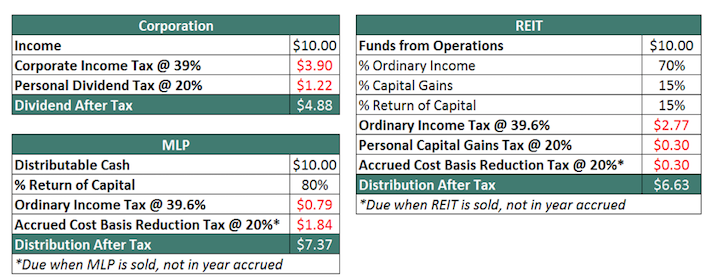
While many countries and brokers have lowered their forex leverage to 30:1, the most common leverage is 100:1. This will give you more buying power, which can help increase your profits and decrease your losses. A trading account that has 100:1 leverage can allow you to hold currency positions of up to $10,000. This can make trading more difficult. These are some tips that will maximize your leverage. Remember to keep your limits in mind!
High leverage
The term high forex leverage is used to describe the trading strategy of using a large amount of money to trade in one currency pair. This is the leverage that allows traders to make large gains or losses using high leverage. This means that an investor can trade $5000 for ten dollars if they have a one-dollar position with leverage of 100. High leverage is a term of the agreement between the broker/client. This form of Forex trading attracts many investors as they have more control over their funds.

It is important to exercise caution when trading high forex leverage. Firstly, make sure you are trading with a highly regulated broker. Those regulated by the IFSC are the best choices for traders looking to use high forex leverage. The upside to leverage is that it can increase your profits or loses, but it also increases your risk when trading. You should not use more than 100 percent leverage to trade a currency pair.
Maximum leverage
Forex leverage is the maximum amount of money you are able to trade. This can be up to a factor of 100 and is based on your deposit size. To control trades worth up to $200,000, leverage is 1:100 in a forex account. Leverage of 1:100 can be used to increase deposits if your deposit is small, such as $100. You can leverage 2:100 to increase your deposit amount if your deposit is larger than $100
Depending on your trading experience, funds and other factors, the optimal forex leverage will differ. Generally, the ratio of 1:100 to 1:200 is considered optimal for most traders. This means that you have $500 to manage your total volume, which can be up to 50K. To avoid losing account equity, traders should adhere to risk management rules. Also, reserve funds to prevent losing active trades. This way, you can avoid incurring losses and liquidate trades without losing all of your money.
Maximum leverage
When determining Forex leverage, it is a good idea to find out the margin requirements for the broker you use. Most brokers express their leverage ratio as a percentage. If the minimum margin required for a trade amounts to $100, you will need to deposit at most 100 dollars. Brokers can offer leverage ratios as high as 1:150. Remember that leverage refers to a ratio that permits traders to trade with more capital than the minimum deposit amount.

In trading Forex, the maximum leverage is usually low. This type of leverage is good for beginners and risk-averse investors. Low forex leverage can be found below 100, 3, 5, 1, or 10:1. Many brokers in Europe have decreased their maximum Forex leverage down to 30:1 for regulatory reasons.
FAQ
How does inflation affect the stock market
Inflation is a factor that affects the stock market. Investors need to pay less annually for goods and services. As prices rise, stocks fall. You should buy shares whenever they are cheap.
How do people lose money on the stock market?
The stock market does not allow you to make money by selling high or buying low. It's a place you lose money by buying and selling high.
Stock market is a place for those who are willing and able to take risks. They may buy stocks at lower prices than they actually are and sell them at higher levels.
They hope to gain from the ups and downs of the market. They might lose everything if they don’t pay attention.
How are share prices established?
Investors decide the share price. They are looking to return their investment. They want to make money from the company. So they buy shares at a certain price. If the share price goes up, then the investor makes more profit. The investor loses money if the share prices fall.
An investor's primary goal is to make money. This is why they invest in companies. They are able to make lots of cash.
What is the difference in a broker and financial advisor?
Brokers are individuals who help people and businesses to buy and sell securities and other forms. They take care all of the paperwork.
Financial advisors are specialists in personal finance. They are experts in helping clients plan for retirement, prepare and meet financial goals.
Financial advisors may be employed by banks, insurance companies, or other institutions. They could also work for an independent fee-only professional.
It is a good idea to take courses in marketing, accounting and finance if your goal is to make a career out of the financial services industry. Also, it is important to understand about the different types available in investment.
What are the benefits to owning stocks
Stocks are more volatile that bonds. When a company goes bankrupt, the value of its shares will fall dramatically.
But, shares will increase if the company grows.
Companies usually issue new shares to raise capital. This allows investors the opportunity to purchase more shares.
To borrow money, companies use debt financing. This allows them to get cheap credit that will allow them to grow faster.
People will purchase a product that is good if it's a quality product. The stock's price will rise as more people demand it.
Stock prices should rise as long as the company produces products people want.
Statistics
- For instance, an individual or entity that owns 100,000 shares of a company with one million outstanding shares would have a 10% ownership stake. (investopedia.com)
- Even if you find talent for trading stocks, allocating more than 10% of your portfolio to an individual stock can expose your savings to too much volatility. (nerdwallet.com)
- Our focus on Main Street investors reflects the fact that American households own $38 trillion worth of equities, more than 59 percent of the U.S. equity market either directly or indirectly through mutual funds, retirement accounts, and other investments. (sec.gov)
- US resident who opens a new IBKR Pro individual or joint account receives a 0.25% rate reduction on margin loans. (nerdwallet.com)
External Links
How To
How to open an account for trading
The first step is to open a brokerage account. There are many brokers that provide different services. Some have fees, others do not. Etrade (TD Ameritrade), Fidelity Schwab, Scottrade and Interactive Brokers are the most popular brokerages.
Once you have opened your account, it is time to decide what type of account you want. You can choose from these options:
-
Individual Retirement Accounts (IRAs)
-
Roth Individual Retirement Accounts
-
401(k)s
-
403(b)s
-
SIMPLE IRAs
-
SEP IRAs
-
SIMPLE 401 (k)s
Each option offers different advantages. IRA accounts provide tax advantages, however they are more complex than other options. Roth IRAs allow investors to deduct contributions from their taxable income but cannot be used as a source of funds for withdrawals. SIMPLE IRAs have SEP IRAs. However, they can also be funded by employer matching dollars. SIMPLE IRAs have a simple setup and are easy to maintain. They enable employees to contribute before taxes and allow employers to match their contributions.
The final step is to decide how much money you wish to invest. This is the initial deposit. Most brokers will offer you a range deposit options based on your return expectations. You might receive $5,000-$10,000 depending upon your return rate. The lower end of the range represents a prudent approach, while those at the top represent a more risky approach.
After you've decided which type of account you want you will need to choose how much money to invest. Each broker has minimum amounts that you must invest. These minimum amounts can vary from broker to broker, so make sure you check with each one.
After you've decided the type and amount of money that you want to put into an account, you will need to find a broker. Before choosing a broker, you should consider these factors:
-
Fees - Be sure to understand and be reasonable with the fees. Many brokers will offer rebates or free trades as a way to hide their fees. However, some brokers raise their fees after you place your first order. Be wary of any broker who tries to trick you into paying extra fees.
-
Customer service – You want customer service representatives who know their products well and can quickly answer your questions.
-
Security - Make sure you choose a broker that offers security features such multi-signature technology, two-factor authentication, and other.
-
Mobile apps - Check if the broker offers mobile apps that let you access your portfolio anywhere via your smartphone.
-
Social media presence: Find out if the broker has a social media presence. If they don't, then it might be time to move on.
-
Technology - Does it use cutting-edge technology Is the trading platform easy to use? Is there any difficulty using the trading platform?
Once you have decided on a broker, it is time to open an account. Some brokers offer free trials. Other brokers charge a small fee for you to get started. After signing up you will need confirmation of your email address. Next, you will be asked for personal information like your name, birth date, and social security number. Finally, you will need to prove that you are who you say they are.
After your verification, you will receive emails from the new brokerage firm. These emails will contain important information about the account. It is crucial that you read them carefully. These emails will inform you about the assets that you can sell and which types of transactions you have available. You also learn the fees involved. Keep track of any promotions your broker offers. These promotions could include contests, free trades, and referral bonuses.
Next is opening an online account. Opening an online account is usually done through a third-party website like TradeStation or Interactive Brokers. These websites can be a great resource for beginners. When opening an account, you'll typically need to provide your full name, address, phone number, email address, and other identifying information. After all this information is submitted, an activation code will be sent to you. This code will allow you to log in to your account and complete the process.
You can now start investing once you have opened an account!